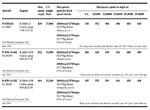DSR T-888
Airman
I was curious of what the top speed of the P-47 would be without wing pylons. I found that the Fw-190 found a 8-10kph increase in speed with the removal of its ETC 504(Which is located under the fuselage. By using common sense, it would only make sense if the P-51 had a better increase of speed because the Mustang has 2 pylons under each wing of roughly the same size of the Fw-190's ETC 504. I found a 20kph increase in speed with the removal of the P-51B's pylons. So knowing that the P-47's pylons are nearly 3 times the size of the P-51's pylons; what would be the speed increase if we were able to remove the pylons on the P-47. Or are all tests on the P-47 completed without wing pylons.
Thanks
Thanks

